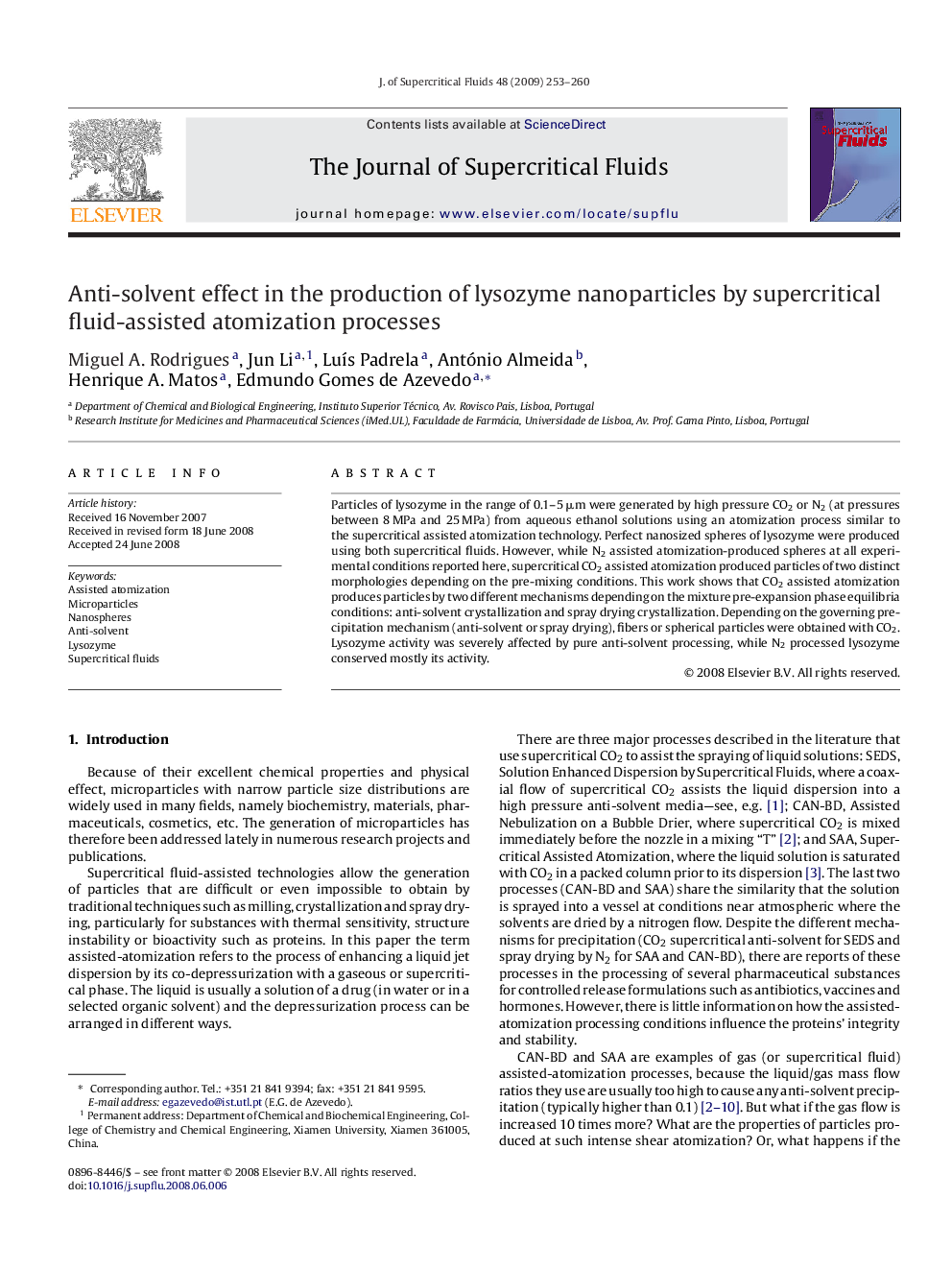| Article ID | Journal | Published Year | Pages | File Type |
|---|---|---|---|---|
| 231757 | The Journal of Supercritical Fluids | 2009 | 8 Pages |
Particles of lysozyme in the range of 0.1–5 μm were generated by high pressure CO2 or N2 (at pressures between 8 MPa and 25 MPa) from aqueous ethanol solutions using an atomization process similar to the supercritical assisted atomization technology. Perfect nanosized spheres of lysozyme were produced using both supercritical fluids. However, while N2 assisted atomization-produced spheres at all experimental conditions reported here, supercritical CO2 assisted atomization produced particles of two distinct morphologies depending on the pre-mixing conditions. This work shows that CO2 assisted atomization produces particles by two different mechanisms depending on the mixture pre-expansion phase equilibria conditions: anti-solvent crystallization and spray drying crystallization. Depending on the governing precipitation mechanism (anti-solvent or spray drying), fibers or spherical particles were obtained with CO2. Lysozyme activity was severely affected by pure anti-solvent processing, while N2 processed lysozyme conserved mostly its activity.
Graphical abstractParticles of lysozyme in the range of 0.1–5 μm were generated by high pressure CO2 or N2 (at pressures between 8 MPa and 25 MPa) from aqueous ethanol solutions using an atomization process similar to the supercritical-assisted atomization technology.Figure optionsDownload full-size imageDownload as PowerPoint slide
